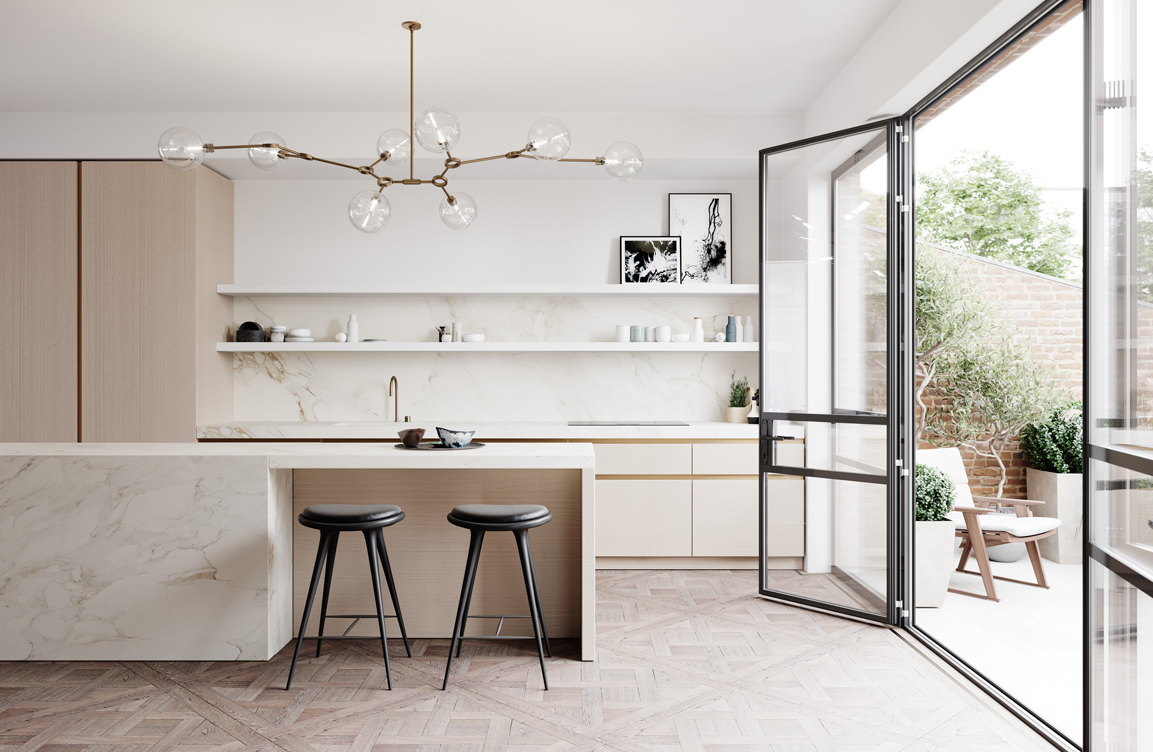For a development, there needs to be more to a design than just stylish aesthetic. Whilst the commercial responsibility remains with you as the developer, your interior designer should play the trusted, fundamental role in advising how to achieve the end objective whilst ensuring the very best return on investment.
1. Super-prime means super-prime
The expectations of today’s generation are at an all-time high – they want it all! Requirements now go beyond a visually enticing apartment; it needs to be intelligent and thoughtful too. There needs to be consideration for how a scheme can be elevated. Consider how it will appeal to your target audience and how it will contribute to achieving a premium price.
2. Involving an interior designer from the outset pays dividends
This will ensure your designer can offer their expertise at every stage, working closely with architects and the rest of the professional team on spatial planning and delivering the overall design concept. This way creative solutions that will appeal to your target buyers can be found upfront, rather than compromising later down the line.
3. Trust is key
Trust between you and your designer is crucial in achieving an outstanding end result. Your designer should be given the freedom to create something that maximises space and includes what discerning clients look for, whilst delivering a strong concept.
4. Design contributes to your overall brand image
Creating a flagship development plays an influential role in urban regeneration. It will be your brand beacon and will act as the internal focus for further developments, keeping images consistent and recognisable across your portfolio. For developers, design should convey the brand vision that resonates with the target market in mind. This should be an essential part of the brief.
5. Context is king
The period of the building, its architecture, cultural significance and location should always play an important role in the development of design. Being mindful of these aspects will result in intelligent design and sensitivity to surroundings. Location will determine how people interact with the area and provides valuable clues to the type of buyer that can be expected.
6. Space planning sits at the centre of good design
At Mon Interiors, we design from the inside out. We put the needs of the client (or in this case the prospective buyer) at the core of the design. To maximise on usable space, you must first think about how the space will be interacted with and used. By doing so, this can substantially increase the saleable square footage of a development; thud adding further commercial value to your project.
7. Buyers want unique not bland
The idea of providing a ‘blank canvas’ for buyers to put their own stamp on a property is a nice idea, but the reality is that it rarely works. Most buyers will be put off paying top whack for a somewhat unfinished property. According to property portal Prime Location, buyers are progressively opting for the fully-kitted homes. Therefore, it’s often better to create a stylish yet timeless, turnkey product that a buyer will fall in love with. Utilising in-depth knowledge of your perfect buyer and finding the fine balance between a neutral non-polarising palette, well-chosen accent colours and effective styling, will indefinitely result in an increase in the end sales value. Where property is sold off-plan, interior design packages can be offered to buyers as an extra luxury perk!
8. Budget for final dressing
Factoring in the final dressing element of your development during the early stages of budget planning will ensure the design is showcased at its maximum potential. Select key accessories to style the space and enhance the concept. This will play an essential role in helping the potential buyer visualise the lifestyle you want them to buy into.
9. Choose good design over cost
Attention to detail needs to take precedence. If the details aren’t spot on, the end result won’t be as strong. This can potentially leave your development more difficult to sell. An experienced interior designer will know where your money is better spent and where money can be clawed back. For example, common parts of a building such as the entrance and concierge areas of block developments are often left as an afterthought. The entrance is the first impression buyers get and they will often comment if these areas let the development down. Invest in these areas to create impact.
10. Think beyond commercial value
Whilst developments are ultimately about delivering commercial value, remember you are creating a home. Good design sits at the heart of this; giving new life to buildings, enhancing the local area, improving the quality of life and creating a legacy for future generations.

